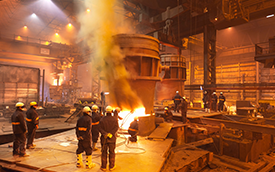
The bunker fuel oil price in China’s commodity market has become a focal point for industry stakeholders, reflecting broader economic trends and geopolitical tensions. As global demand fluctuates and supply chains face disruptions, understanding these price dynamics is crucial for businesses reliant on maritime transport. In this article, I will delve into the factors influencing bunker fuel prices and how they relate to overall market conditions.
Click to find more about bunker fuel oil price in China commodity market.
Understanding Bunker Fuel Oil Price Trends in China

Bunker fuel oil prices in China have shown significant volatility over recent months, driven by both domestic consumption patterns and international crude oil fluctuations. The interplay between local refining capacities and import dependencies plays a critical role in shaping these prices. Additionally, regulatory changes aimed at reducing emissions are pushing the industry towards cleaner alternatives, which could further impact traditional bunker fuels’ pricing structures. Monitoring these trends is essential for companies looking to optimize their operational costs amidst changing market conditions.
Mysteel’s Role in Market Analysis
Mysteel has emerged as a key player in providing insights into China’s commodity markets, including bunker fuel oil pricing. Their comprehensive data analytics help stakeholders understand current trends and forecast future movements effectively. By leveraging Mysteel‘s reports, businesses can make informed decisions regarding procurement strategies and risk management related to bunkering operations. This analytical approach not only aids immediate decision-making but also contributes to long-term strategic planning within the sector.
Current Pricing Dynamics for Bunker Fuel Oil
The price for bunker fuel oil remains influenced by several external factors such as crude oil rates, shipping demand fluctuations, and environmental regulations impacting production methods. Recent spikes or drops can often be traced back to shifts within the global energy landscape or regional supply chain issues that affect availability directly at Chinese ports. Understanding these nuances allows companies engaged with marine logistics to better navigate potential cost implications associated with their operations.
Commodity Market Crude Oil Price Influences
The commodity market crude oil price serves as a fundamental driver of various derivative products like bunker fuel oils; thus its movements warrant close attention from all involved parties. Factors such as OPEC+ production decisions or geopolitical unrest significantly sway crude prices globally—consequently affecting local markets like those found across China’s coastal regions where shipping activities are concentrated. Analyzing historical data alongside real-time updates enables firms to anticipate changes that may ripple through their operational frameworks.
Conclusion: Navigating Challenges Ahead
Navigating the complexities surrounding bunker fuel oil prices in China’s commodity market requires diligence from all stakeholders involved—from suppliers to end-users alike. With ongoing developments both domestically and internationally influencing pricing mechanisms continuously evolving under pressure from multiple fronts—including regulatory demands—the ability to adapt becomes paramount for success moving forward.
